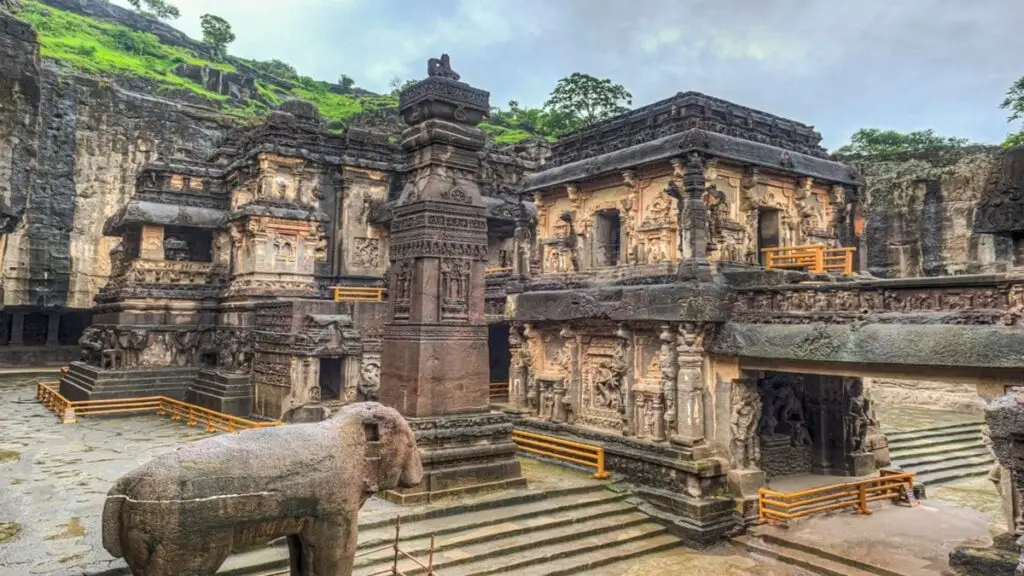The world is full of historical places and natural marvels, but few of these are privileged enough to be recognized as UNESCO World Heritage Sites. These sites are recognized by the United Nations Educational, Scientific and Cultural Organization (UNESCO) as being of cultural, historical, scientific, or natural importance. With a rich and crowded history of thousands of years, India is one of the nations that has the highest number of UNESCO World Heritage Sites in the world, with 43 of them. The ancient temples, magnificent landscapes, imperial forts, and natural scenery are narrating the tales of the history, civilizations, and traditions of India.
In this Article, we embark on a tour of India’s most precious places, discovering their importance and contribution to the preservation of history for generations to come.
The UNESCO World Heritage Program: Preserving Global History
Prior to embarking on India’s heritage sites, one must have a basic idea about the work of UNESCO organisation in preserving such treasures.
What is UNESCO?
The UNESCO meaning goes beyond the preservation of heritage. Founded on November 16, 1945, UNESCO seeks to advance international cooperation in education, science, and culture. The organization strives towards the UNESCO and Sustainable Development Goals (SDGs) by promoting peace and security through international cooperation.

The organization has 194 member states and 12 associate members and plays a crucial role in promoting peace and security through international cooperation and actively participates in its activities and endeavors towards the Sustainable Development Goals (SDGs).
What is the UNESCO World Heritage sites Program?
The UNESCO World Heritage Convention was enacted in 1972 through the Convention Concerning the Protection of the World Cultural and Natural Heritage. The first properties were added to the list in 1978, and thousands of properties worldwide have been listed ever since.
India’s Commitment to UNESCO Goals
India signed the World Heritage Convention in 1977 and has been actively involved in conserving and protecting its sites since then. The nation is adhering to UNESCO’s Goals by maintaining sustainable tourism, enhancing local culture, and participating in conservation activities. India has also shown itself devoted to the UNESCO goals through a range of activities, such as financial support, conservation activities, and educational initiatives for enhancing cultural and natural heritage awareness.
India’s Cultural Heritage Sites: Echoes of the Past (35 Sites)
India’s Cultural Richness in UNESCO Cultural Heritage List
India’s cultural heritage sites reflect its architectural excellence, historical importance, and religious variety. From the magnificence of the Mughal Empire to the artistic perfection of ancient rock-cut temples, these sites are a demonstration of my heritages that have survived the test of time.

India’s Notable Cultural Heritage Sites:
- Taj Mahal (Agra, Uttar Pradesh) – Eternal symbol of love, this Mughal masterpiece was constructed by Shah Jahan in memory of his beloved wife Mumtaz Mahal.
- Ajanta & Ellora Caves (Maharashtra) – A stunning series of rock-cut Buddhist, Hindu, and Jain temples that date back to the 2nd century BCE.
- Khajuraho Temples (Madhya Pradesh) – Famous for their delicate erotic sculptures, these temples are a blend of religion and artistic genius.
- Hampi (Karnataka) – Remains of the powerful Vijayanagara Empire, reflecting temple architecture and ancient bazaars.
- Jaipur City (Rajasthan) – Known as the Pink City, it represents Rajput and Mughal architectural perfection.
UNESCO cultural heritage sites are not just tourist destinations; they are active witnesses to human civilization. UNESCO organisation takes care that these sites are preserved and conserved for the future as well.
India’s Natural Heritage Sites: Wonders of the Wild (7 Sites)
India’s natural heritage sites uncover the country’s wonderful biodiversity, diverse ecosystems, and beautiful landscapes. The country’s commitment to the preservation of its natural heritage is brought to the forefront by its numerous national parks, wildlife sanctuaries, and conservation policies that protect these valuable ecosystems for generations to enjoy.

Natural Heritage Sites:
- Kaziranga National Park (Assam) – A sanctuary for the one-horned rhinoceros, home to a diverse range of flora and fauna.
- Sundarbans National Park (West Bengal) – The largest mangrove forest in the world, home to the endangered Royal Bengal Tiger.
- Western Ghats (Maharashtra, Karnataka, Kerala, Tamil Nadu) – A biodiversity hotspot that hosts more than 7,400 plant species and rare animal species.
- Nanda Devi and Valley of Flowers National Parks (Uttarakhand) – Astounding alpine meadows and towering mountain tops home to rare flora and fauna including the snow leopard.
- Manas National Park (Assam) – Diverse ecosystem with a wide variety of fauna including some endangered species, such as the greater one-horned rhinoceros.
- Keoladeo National Park (Rajasthan) – Important bird sanctuary with a large population of migratory waterfowl.
- Great Himalayan National Park Conservation Area (Himachal Pradesh) – Pristine alpine landscapes with glaciers and rivers, a haven for snow leopards, blue sheep, and other Himalayan wildlife.
These sites play a pivotal role in the preservation of wildlife and natural ecosystems in India. They are the driving force behind conservation and ecotourism, as part of UNESCO and sustainable development goals.
India’s Only Mixed Heritage Site: Kanchenjunga National Park
The Kanchenjunga National Park is known as India’s only mixed heritage site, located in the State of Sikkim. This recognition, in both natural and cultural contexts, is said to have elevated it to the status of a World Heritage site.

Cultural and Natural Aspects:
- As the host of Mount Kanchenjunga, it is the third-highest peak globally.
- Rich in Buddhist spirituality and mythology.
- Home to the snow leopard, the red panda, and blue sheep of the Himalayas.
This site reflects the cohabitation of nature and culture, one of the salient aspects of UNESCO goals.
The Journey of Conservation: Challenges & Efforts
Threats to India’s Heritage Sites
India’s cultural heritage is under danger from increasing urbanization, industrialization, and infrastructure, due to encroachment and destruction of buildings. Climate change compounds the danger through increased temperature, erosion, and weather disasters. Degradation is further increased by over-tourism, as well as ignorance. It is suffered in many of these sites from poverty due to low funding.
Conservation Efforts
- Government Initiatives: The Archaeological Survey of India (ASI) restores and preserves monuments by way of heritage policies and funding.
- Community Involvement: Local populations participate in conservation initiatives, eco-tourism, and the preservation of traditional knowledge.
- UNESCO Partnership: India collaborates with UNESCO organisation to improve heritage management, secure international recognition, and promote sustainable conservation efforts.
India’s Timeless Legacy
UNESCO World Heritage Sites in India are not mere historical sites. They form my heritage and reflect India’s unwavering dedication to UNESCO goals of preserving cultural and natural wonders. Whether an adventurer, a history buff or a spiritual tourist, these heritage sites in India will give anyone visiting here a unique experience connecting the past with the present.
We have inherited these treasures from our ancestors; we must preserve their beliefs for our unborn children so that they can witness the wonders of India’s magnificent journey through the centuries. Arrange your trip right away and let the grandeur of the heritage come alive!





nice
Nice